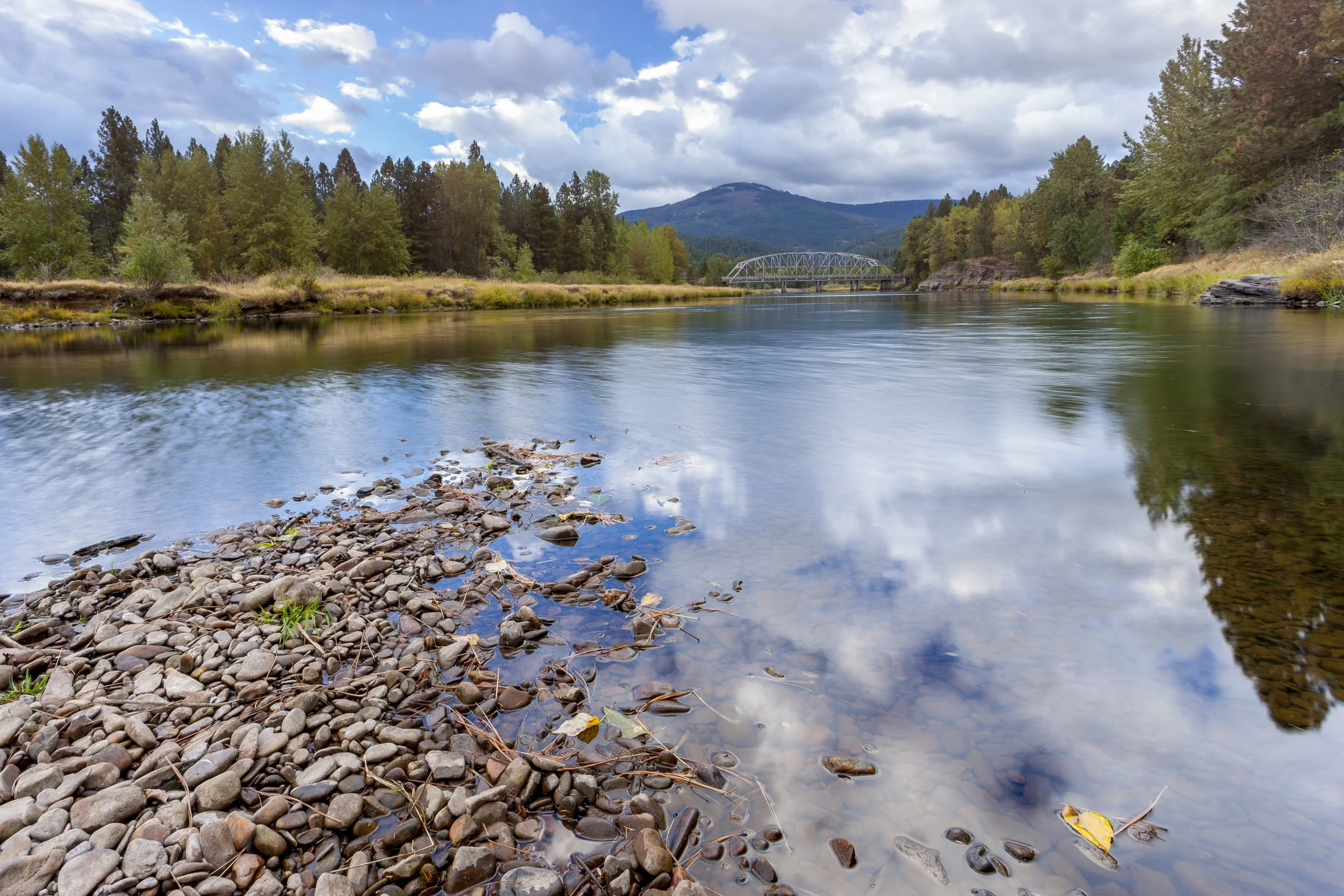riparian buffers & Beaver dam analogs improve water quality and benefit surrounding wildlife
We have planted over 100,000 trees and native plants in the last 10 years with the help of so many community volunteers.
Riparian Restoration
A variety of past and current land uses within the Greater Spokane River Watershed have contributed to a steady degradation in our local water quality. Unsustainable agricultural, forestry, and grazing practices combined with urban development have resulted in erosion and sedimentation, nutrient loading, riparian buffer loss, wetland destruction, and contaminated stormwater runoff. As a result, water bodies in these watersheds do not meet Washington State water quality standards for parameters such as fecal coliform, dissolved oxygen, pH, turbidity, and temperature.
In order to improve water quality in these degraded watersheds, The Lands Council is recruiting private landowners interested in implementing “riparian” restoration activities on their properties or farms. With the help of hundreds of students and volunteers, we plant native trees and shrubs in buffer strips hugging both sides of a stream. Vegetated riparian buffers provide numerous benefits, including reducing sediment loading (by stabilizing soil), decreasing water temperature (through shading), increasing dissolved oxygen (by reducing water temperature), controlling pH (by trapping and filtering polluted runoff), enhancing wildlife habitat, and—in combination with livestock fencing/exclusion—reducing fecal coliform bacteria. Recently, we’ve expanded our riparian restoration activities to include active management of invasive weeds through herbicide application and broadcasting upland grasses and forbs. Our comprehensive, multi-year native plant restoration program—which targets high-risk tributaries and confluence areas—will result in optimum age class, density, species diversity, and canopy cover to stabilize streambanks, filter pollutants coming off the land, and reduce elevated stream temperatures.
THE BEAVER SOLUTION
Beavers are key in restoring watersheds and improving water quality
To date, The Lands Council has relocated over 140 beavers in the Inland Northwest.
Expanding urbanization and climate change have created challenges to environmental health and our forest ecosystems; The Lands Council is striving to find practical solutions to these problems. One innovative solution is beavers.
Beavers are progressively acknowledged as essential tools to help our natural resource and environmental health concerns. An increasing amount of science and traditional knowledge shows that beavers are a historically vital component of forest health.
Beavers dam streams, which builds wetlands that function as significant pieces of the life cycle for most forest creatures.
These wetlands not only hold and distribute water more evenly through drought and rainy seasons, but they also sequester carbon, filter toxins, and mitigate flood and fire events. Beavers support fish habitat by placing wood in river systems creating slow water refuge for trout and salmon species. Beavers are also remarkably adaptable and able to thrive in the urban interface. The future of most wildlife, as human populations expand, will undoubtedly be faced with challenges and this limitation.
The Lands Council’s beaver program has a diversified approach to using beavers to address issues. We focus on: policy reform, education and outreach, and direct project implementation. We are actively shaping beaver population management policy and connectivity at the state and regional scale by informing and engaging governing agencies and authorities. We give numerous presentations each year to school groups and other organizations. Additionally, we offer consultation and nuisance management services such as tree protection and flood control structures from beaver activity and we offer alternatives to lethal removal. Finally, The Lands Council prioritizes long term goals to accommodate greater beaver populations – not only with safeguards for nuisance activity, but also with building future habitats that will reforest our stream reaches with trees and vegetation appropriate for beaver diet and structural needs.
But what if we want to restore a stream whose habitat cannot presently support beaver?
That’s where beaver dam analogs (BDAs) come in!
BEAVER DAM ANALOGS (BDAS)
BDAs are light engineering projects designed to mimic beneficial riparian ecosystem processes provided by beavers, such as aquifer storage, creation of wetlands and wildlife habitat, and water quality improvement. Essentially, BDAs are beaver dams built by humans! The Lands Council pounds untreated, round wood fence posts into the stream bed with a pneumatic post driver powered by a small towable diesel air compressor. We then weave Ponderosa pine and grand fir branches in-between posts, starting from the channel bottom and working our way up…a la underwater basket weaving! This brush weave material is sourced from local private forest thinning operations intended to reduce wildfire risk and bark beetle susceptibility, while improving overall forest health.
When strategically-placed, BDAs diminish and deflect erosive forces away from vulnerable streambanks, accumulating sediment behind them and reducing turbidity. BDAs have the effect of raising the water table, expanding natural riparian forest buffer area, and reconnecting an incised channel to its floodplain. In effect, they reduce the overall “flashiness” of degraded streams. Our BDAs are sourced locally and don’t obstruct fish passage. While the posts are temporary and biodegrade over time, they withstand flows long enough accomplish their intended purpose. By simulating natural beaver ecosystems, BDA-restored ecosystems resist wildfires, help combat climate change, and enhance overall ecological resiliency.









